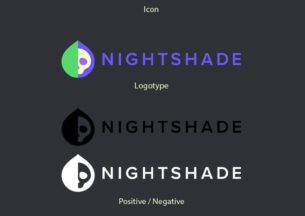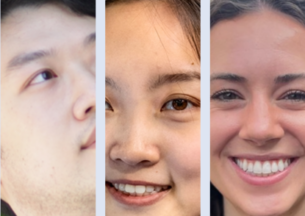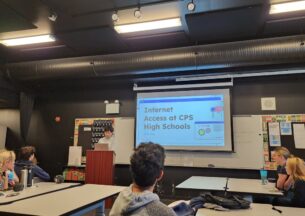Cloud Computing Testbed Chameleon Launches Third Phase with Focus on IoT and Reproducibility

Over the past decade, cloud computing grew from a tool used primarily by large scientific collaborations to one of the core technologies beneath the hood of the internet and other critical systems. That evolution continues today, as the Internet of Things (IoT), more powerful mobile applications, and serverless computing drive new scientific and commercial uses of cloud computing.
Since it launched in 2015, Chameleon has enabled these innovations by providing thousands of computer scientists with the bare metal access they need to assemble and test new cloud computing approaches. Under a new four-year, $10 million grant from the National Science Foundation, the cloud computing testbed led by the University of Chicago will further broaden its scope, adding new features for reproducibility, IoT and networking experimentation, and GPU computation to its core mission.
“Chameleon is a scientific instrument for computer science systems research,” said Kate Keahey, Consortium for Advanced Science and Engineering (CASE) Senior Scientist affiliated with the University of Chicago Department of Computer Science, Senior Computer Scientist at Argonne National Laboratory, and principal investigator of the Chameleon project. “Astronomers have telescopes, biologists have microscopes, and computer scientists have Chameleon.”
In its first five years, Chameleon has attracted more than 4,000 users from over 100 institutions, working on more than 500 different research and education projects. Scientists have used the testbed to study power management, operating systems, virtualization, high performance computing, distributed computing, security, machine learning, and many other research areas. Educators have used Chameleon for cloud computing courses, allowing college and high school students to build their own cloud and learn the inner workings of the technology.
You can read more “Lessons Learned from the Chameleon Testbed” in the team’s paper from the 2020 USENIX Annual Technical Conference.
Growing interest among the Chameleon user community has driven the new priorities for the next phase of the project, Keahey said. A surge in edge computing, fueled by Internet of Things devices that supplement local computation with cloud resources, motivated the creation of a new “Bring Your Own Device” process for users to connect IoT technologies to Chameleon. These new capabilities will support users such as the Sage project, a UChicago/Argonne/Northwestern collaboration studying the deployment of sensor networks in urban and natural environments.
“Some of the most exciting emergent research directions are in developing the cloud to edge continuum,” said Pete Beckman, Director of the Sage project and Co-Director of the Northwestern Argonne Institute of Science and Engineering. “Partnering with Chameleon will allow our users to tap into the potential of such a combined platform.”
Chameleon will also add expanded tools for reproducible research, allowing users to more easily publish and share the details and results of their experiments so that other scientists can replicate and build upon their work. After integration with Jupyter notebooks proved popular with the Chameleon community, the team began work on a sharing portal integrated with the Zenodo platform, where experiments can be easily published and discovered.
Additionally, the third phase of Chameleon introduces new options for software-defined networking, including compatibility with networking testbed project FABRIC, as well as new hardware and storage resources at the project’s two sites: UChicago, and the Texas Advanced Computing Center (TACC).
Unlike traditional computer science testbeds, which are typically configured using technologies developed in-house, the CHameleon Infrastructure (CHI) on which the project is built provides the same capabilities on top of the mainstream open-source OpenStack project. This feature enables Chameleon to provide familiar interfaces to users and operators, as well as work with a large and active development community associated with the project, both making and leveraging contributions. To expand access to computer science research testbeds, the project will continue development of its “CHI-in-a-Box” testbed packaging.
“CHI-in-a-Box allows you to not only build a testbed very, very quickly,” Keahey said. “But it also contains a packaging of our operations model including testbed monitoring as well as failure detection and mitigation tools. The idea is to lower the cost of this type of testbed so that we can have more of them, and allow more researchers to run more experiments.”
“Chameleon is a great example of how shared infrastructure with over 4,000 users can save the academic community time and money while catalyzing new research results,” said Deepankar Medhi, Program Director in the Computer & Information Sciences & Engineering Directorate (CISE) at the National Science Foundation. “NSF is pleased to fund Chameleon for four more years in order to extend the platform with new capabilities, thus allowing researchers to conduct new lines of research and students to learn newer technologies.”











